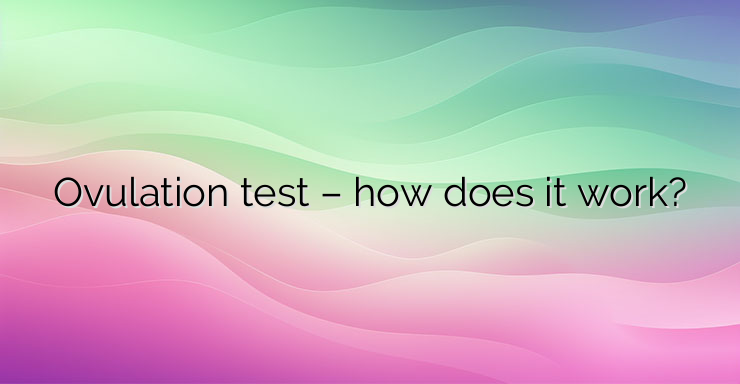When it comes to trying to conceive, timing is so important! There are only a few days each month when a woman can successfully conceive, also known as the “fertile window,” and only one day when ovulation actually occurs. Ovulation is defined as the release of a mature egg from the ovary after follicle formation. Ovulation tests allow to predict with great accuracy when the release of an egg occurs. For many women, ovulation occurs in the middle of the cycle, around day 14. Of course, irregular cycles and countless other factors can contribute to earlier or later ovulation. In fact, it is normal for ovulation to occur between the 8th day or at the latest three weeks from the start of menstruation. When you ovulate is a factor in the length of your menstrual cycle, so women with long cycles ovulate later than women with shorter cycles. Oocyte growth is influenced by follicle-stimulating hormone. At the beginning of the menstrual cycle, the body begins to release follicle-stimulating hormone. It facilitates the growth of a follicle on one of the ovaries. The follicle contains and nourishes an egg. When the follicle is mature enough, a surge of luteinizing hormone causes it to burst and an egg is released. This is the time of ovulation. But how to know the time of ovulation? Using ovulation tests. These widely available and easy-to-use tests can provide information about the onset of a fertile window to help determine the days when sex will have the highest success rate for pregnancy. Ovulation tests measure the levels of luteinizing hormone in the urine. A small amount of luteinizing hormone is produced throughout the menstrual cycle, but in the middle of the cycle its level briefly and dramatically increases. The tests detect this surge of luteinizing hormone through anti-luteinizing hormone antibodies contained in the test’s sensitive test membrane. The peak of luteinizing hormone is, alas, very short, and in order to detect its spike, a woman must be examined at the right time of the month and the right time of the day. Since luteinizing hormone is produced by the body in the morning, mid-afternoon is considered the ideal time to take the ovulation test. Once the spike in hormone levels is detected, fertilization can take place one to three days later. The time with the highest potential for conception is 36 hours after the peak of luteinizing hormone. Since the “fertile window” only occurs once a month and the unfertilized egg has a short lifespan of 24 hours after its release from the ovary, when fertilization by a sperm can occur, accurate ovulation prediction is very helpful when trying to conceive. References: 1. Fertility awareness-based methods of family planning. (2019). acog.org/patient-resources/faqs/contraception/fertility-awareness-based-methods-of-family-planning 2. Gonadotropins: Luteinizing and follicle stimulating hormones. (2018). vivo.colostate.edu/hbooks/pathphys/endocrine/hypopit/lhfsh.html 3. Luteinizing hormone (LH), serum. (n.d.). mayomedicallaboratories.com/test-catalog/Overview/602752


Leave a Reply